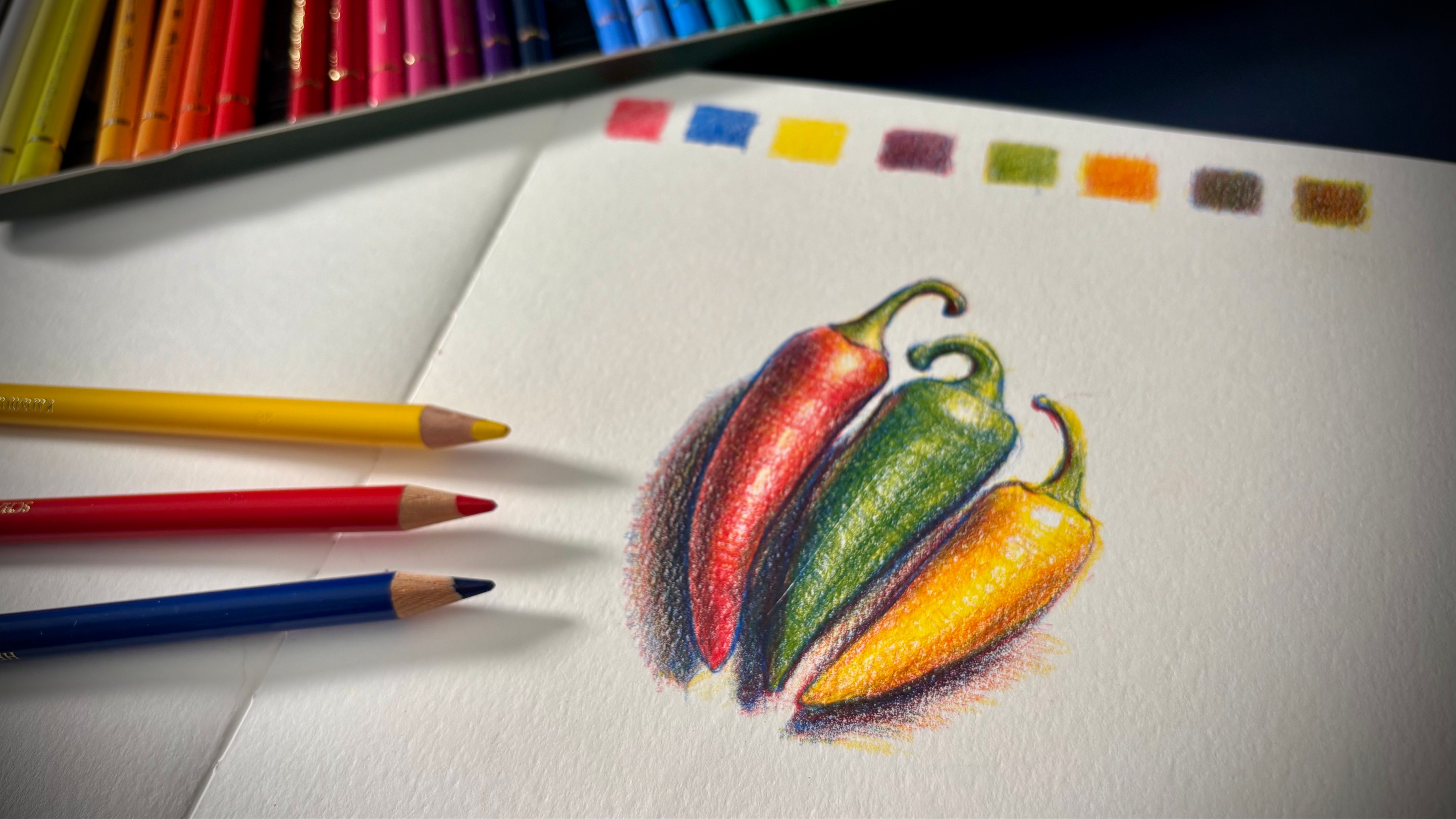
An Artist's Guide to Colour Schemes
Jul 04, 2022You've decided to make your next piece of art. And this one is going to be with a coloured medium.
You'd like to make full use of your artistic licence and come up with your own unique mix of colours - rather than being a slave to the reference photograph and copying the colours exactly.
But you're not sure which combination of colours will work well together and which ones will clash. And how many different colours should you choose?
And what about the background? You're never too sure what colour will help or hurt the main subject you're spent many hours carefully creating.
In this guide and video lesson, we'll cover a few simple (but very effective) colour schemes that you can use in your very next drawing or painting. And guest artist John Cox, will take you through a video demonstration of how he applies them to a quick urban sketch.
The Colour Wheel
To understand colour schemes, you need a copy of the colour wheel to refer to:

The 6 Basic Colour Schemes To Remember
- The Monochromatic Colour Scheme
- The Analogous Colour Scheme
- The Complementary Colour Scheme
- The Split Complementary Colour Scheme
- The Triadic Colour Scheme
- The Tetradic Colour Scheme
Let's take a close look at each one...
1. The Monochromatic Colour Scheme
This is where you use one colour and then various tints and shades of that colour.
Tint = any colour with white added to make it lighter.
Shade = any colour with black added to make it darker.

2. The Analogous Colour Scheme
This is where you use the three colours next to each other on the colour wheel.

3. The Complementary Colour Scheme
This is where we use two colours opposite each other on the colour wheel.

4. The Split Complementary Colour Scheme
This is similar to the complementary colour scheme except that instead of using the colour opposite, we use the colour on either side of the opposite colour (so three colours in total).

5. The Triadic Colour Scheme
Here, we use any three equally spaced apart colours from around the colour wheel.

6. The Tetradic Colour Scheme
This is much easier to see than explain! We use two pairs or complementary colours (so four colours in total) that form a rectangle within the colour wheel.

Click here to download a cheat sheet of these colour schemes
See These Colour Schemes Applied to a Quick Painted Sketch
In the video below, guest artist John Cox paints a simple urban sketch using the above colour schemes so you can see how they're applied in a real example:
A Very Useful Free Tool to Play About with Different Colour Schemes
Want a quick way to see how different colour schemes compare, without having to get the paints and brushes out? There's a brilliant free online tool by Canva that lets you choose your colour scheme and then pick the different colours (including tints and shade) for that scheme.
Super easy to use and a great time saver!
Click here to use Canva's colour scheme tool
Note: Canva's tool uses the Red Blue Green colour wheel and not the standard REd Yellow Blue colour wheel you would buy at an art supply store, which can make a difference when buying paints. Thanks to Patricia for pointing this out!
Never Miss a Blog Post!
I'll send you a short email whenever I publish a new blog post (which is most weeks)...
I will never send you spam or pass tyour email address to any third party




